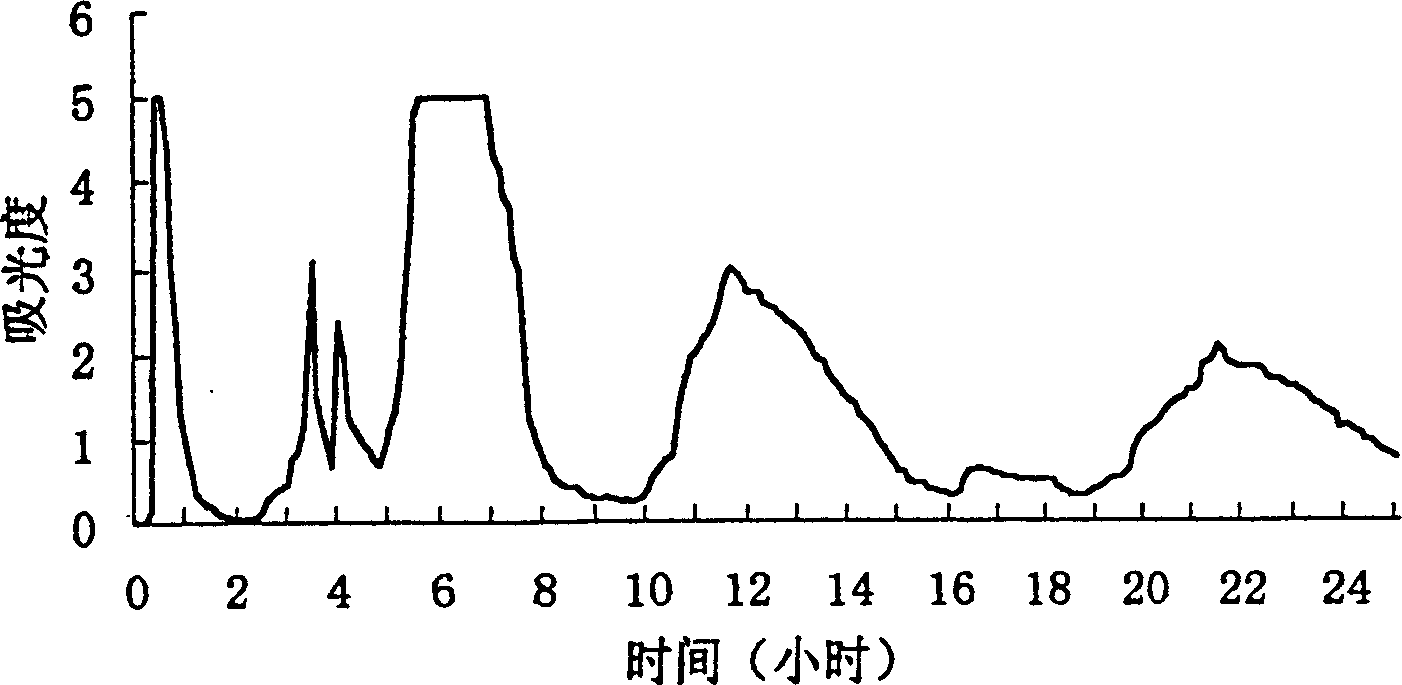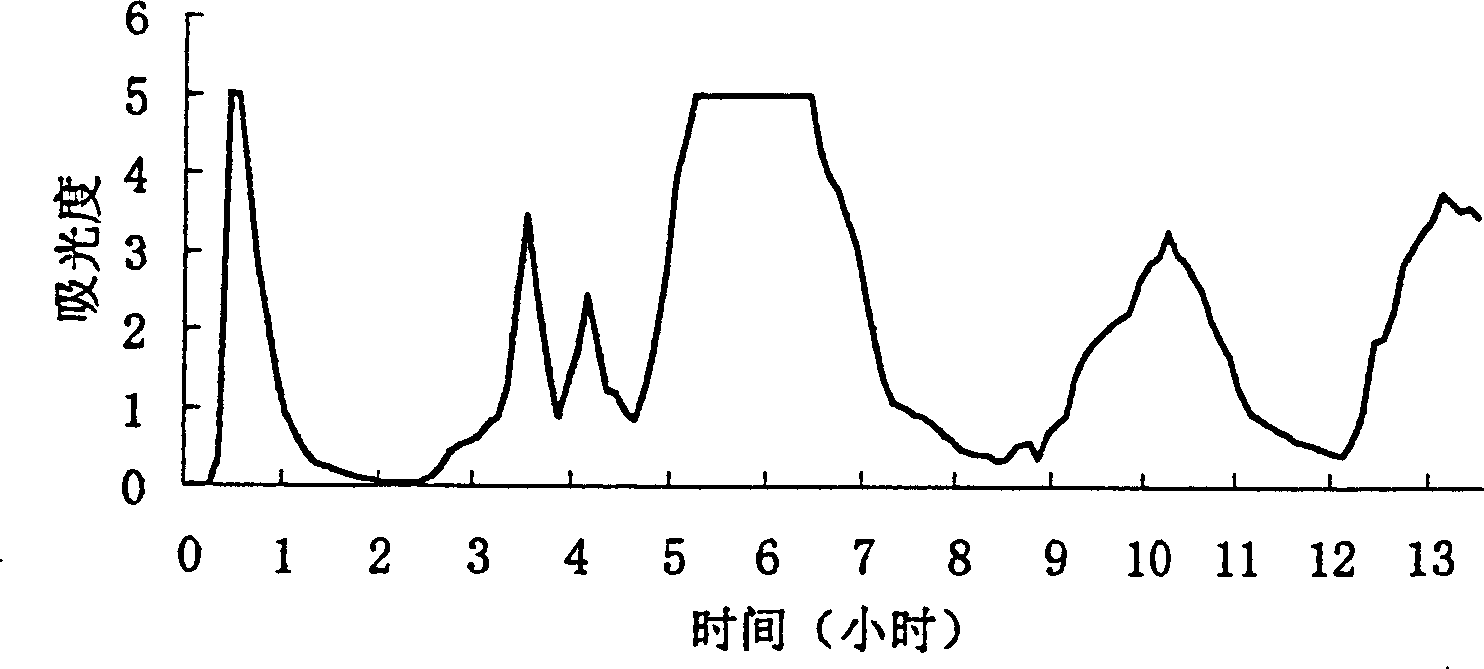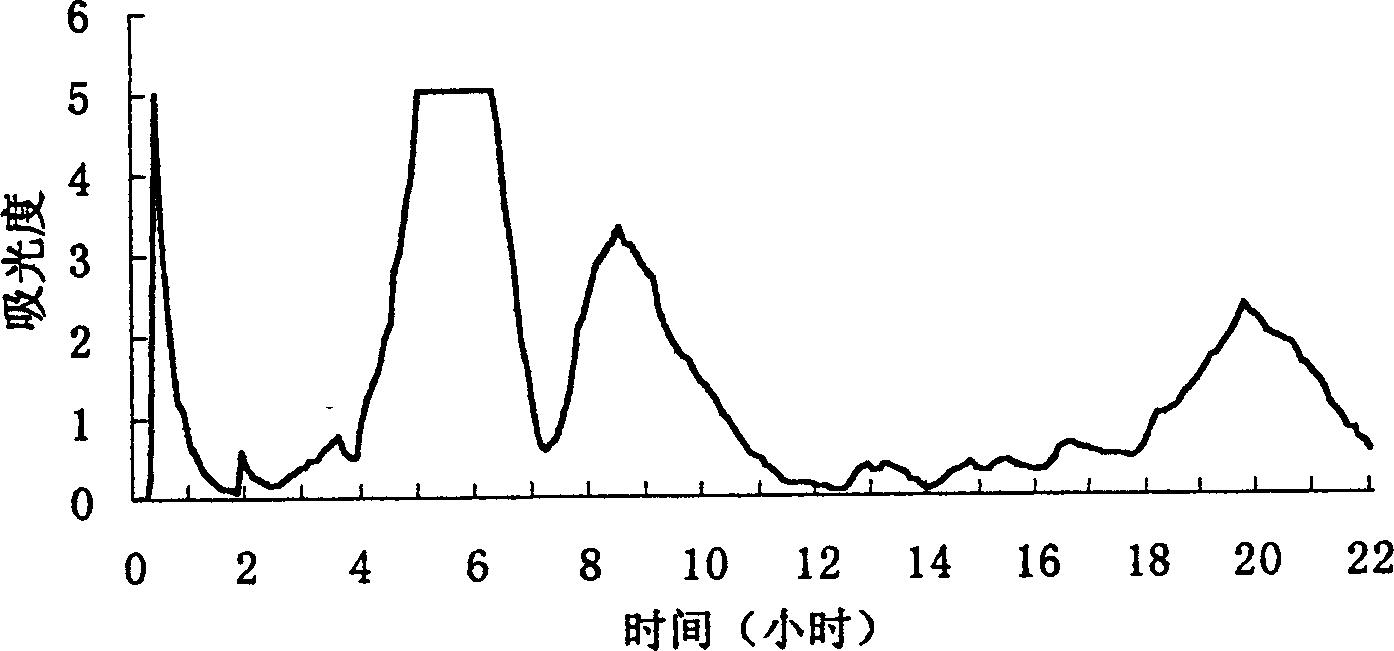Countercurrent chromatographic separation process for reducing fixed phase
A technology of countercurrent chromatography and separation method, applied in material separation, analysis materials, measuring devices, etc., can solve the problems of low single-hour output of active ingredient monomers, low separation efficiency, long peak time, etc., to improve the single-hour output , high production efficiency, the effect of improving peak shape
- Summary
- Abstract
- Description
- Claims
- Application Information
AI Technical Summary
Problems solved by technology
Method used
Image
Examples
Embodiment 1
[0020] Example 1 The present invention is used to separate active ingredients in tea polyphenols
[0021] The countercurrent chromatograph is a domestic GS-10A type, and the composition of tea polyphenols is: epigallocatechin gallate (EGCG) accounts for 26.16%, epicatechin gallate (ECG) accounts for 5.87%, gallocatechin Gallate (GCG) accounted for 12.13%, epicatechin (EC) accounted for 9.43%, epigallocatechin (EGC) accounted for 8.92%, and catechin (D, L-C) accounted for 2.60%. Stationary phase and mobile phase are prepared separately. The stationary phase was prepared by taking 50ml petroleum ether and 350ml ethyl acetate, and the mobile phase was 2000ml pure distilled water. After pumping the stationary phase into the countercurrent chromatographic column, weigh 0.5 g of tea polyphenols and dissolve it in 40 ml of mobile phase, turn on the countercurrent chromatograph to 800 rpm, then pump the tea polyphenol solution in at a flow rate of 2.0 ml / min, and then Use the mobile...
Embodiment 2
[0023] Embodiment 2 The present invention is used to separate the active ingredient in the Pueraria lobata extract
[0024] The countercurrent chromatograph is a domestic GS-10A type, and the composition of isoflavones in Pueraria root extract is: puerarin (Puerarin) accounts for 36.16%, daidzein (Daidzein) accounts for 3.87%, daidzin (Daidzin) accounts for 17.13%, and the composition solvent The stationary phase and mobile phase in the system are prepared separately. The preparation of the stationary phase was prepared by taking 50ml of n-butanol, 200ml of ethyl acetate and 50ml of methanol, and the mobile phase was 1200ml of pure distilled water. After the stationary phase is pumped into the countercurrent chromatographic column, take by weighing Pueraria root extract 0.5g and dissolve it in 40ml mobile phase, open the countercurrent chromatograph to 800 rpm, then pump into the Pueraria root extract solution with a flow rate of 1.5ml / min, and then Use the mobile phase inste...
Embodiment 3
[0026] Embodiment 3 The present invention is used to separate active components in tea alkaloids
[0027] The countercurrent chromatograph is a domestic GS-10A type, and the composition of the active ingredients in the tea alkaloids is: caffeine (Caffeine) accounts for 53.28%, theophylline (Theophylline) accounts for 1.47%, theobromine (Theobromine) accounts for 15.93%. The stationary phase and mobile phase are prepared separately. The preparation of the stationary phase was prepared by taking 200ml of water (with a pH range of 4.5) and 300ml of methanol, and the mobile phase was 1500ml of chloroform. After pumping the stationary phase into the countercurrent chromatographic column, weigh 0.8 g of tea alkaloids and dissolve them in 30 ml of mobile phase, turn on the countercurrent chromatograph to 800 rpm, then pump in the tea alkaloids solution at a flow rate of 1.8 ml / min, and then Use the mobile phase instead to elute the alkaloid components in the column. According to th...
PUM
 Login to View More
Login to View More Abstract
Description
Claims
Application Information
 Login to View More
Login to View More - R&D
- Intellectual Property
- Life Sciences
- Materials
- Tech Scout
- Unparalleled Data Quality
- Higher Quality Content
- 60% Fewer Hallucinations
Browse by: Latest US Patents, China's latest patents, Technical Efficacy Thesaurus, Application Domain, Technology Topic, Popular Technical Reports.
© 2025 PatSnap. All rights reserved.Legal|Privacy policy|Modern Slavery Act Transparency Statement|Sitemap|About US| Contact US: help@patsnap.com



